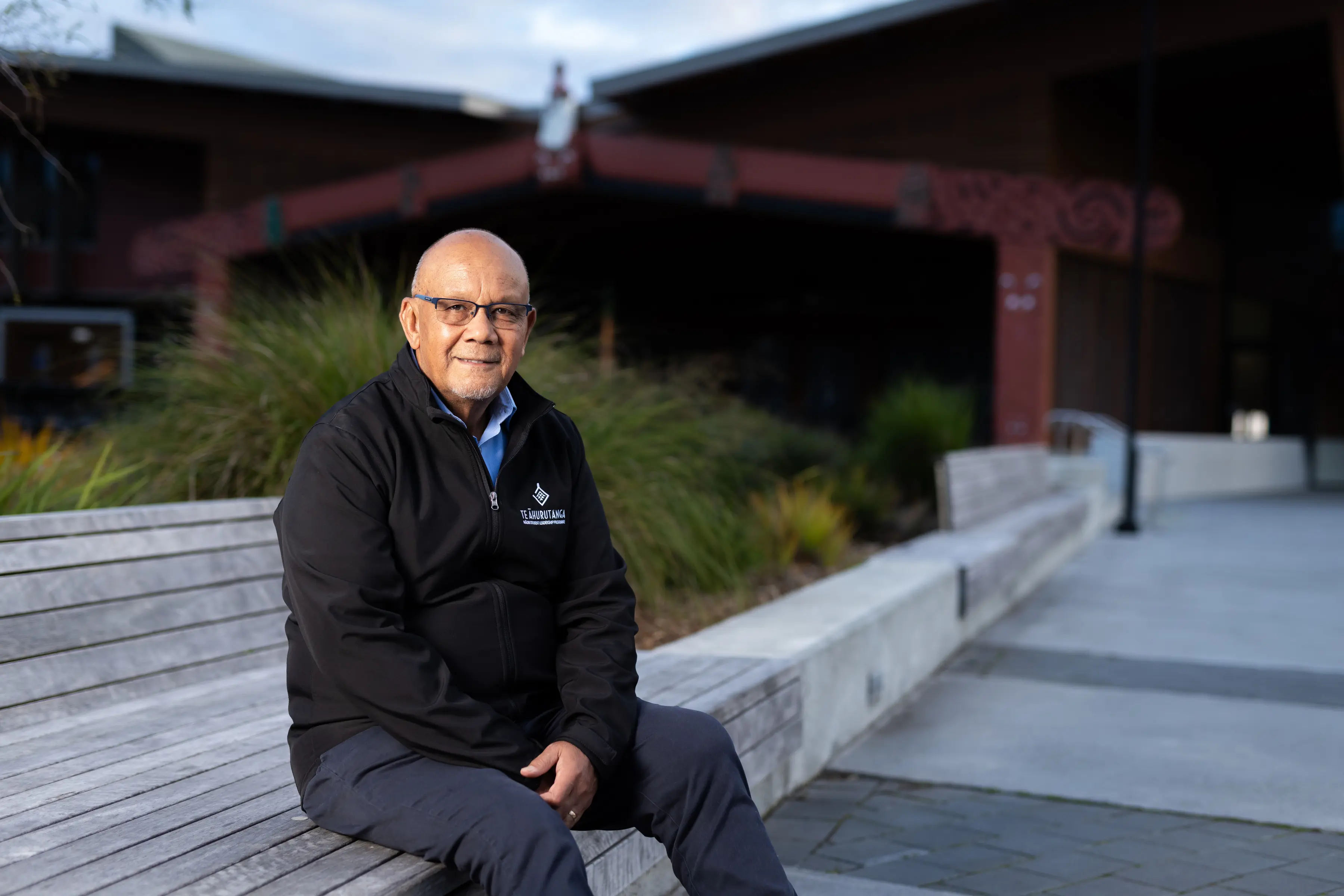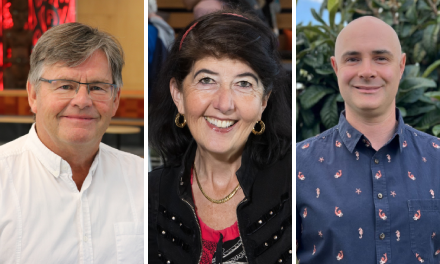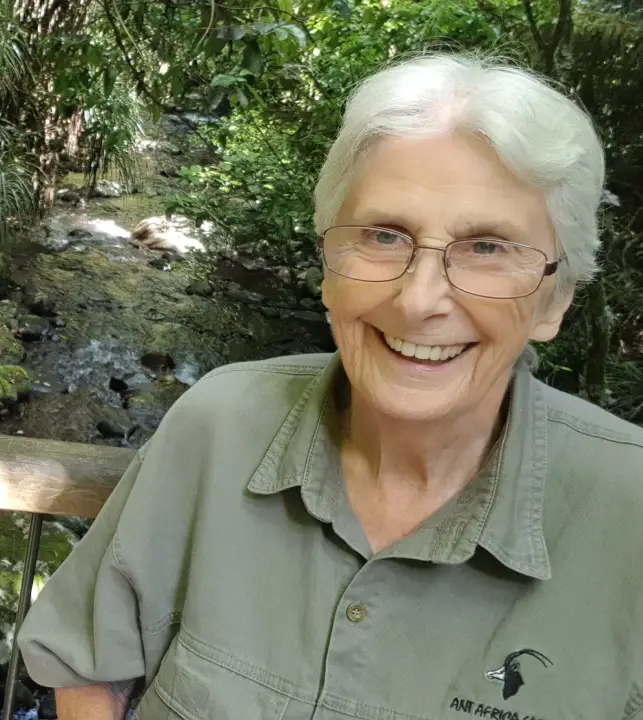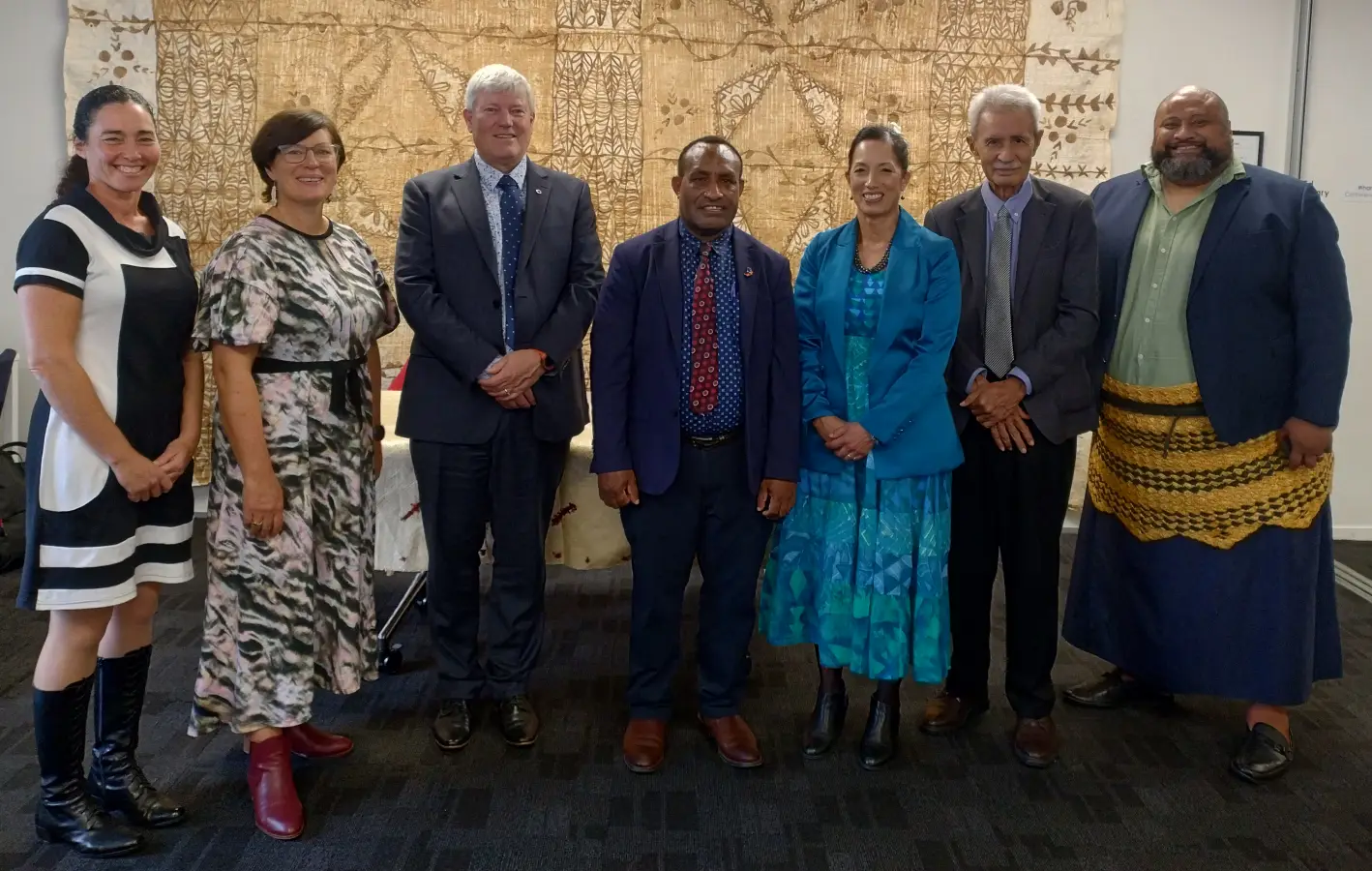An exhibition centred on Matariki, by revered Māori artist Emily Karaka, who was mentored by Colin McCahon, launches at the University of Waikato’s Gallagher of Performing Arts on June 26, as part of Matariki ki Waikato.
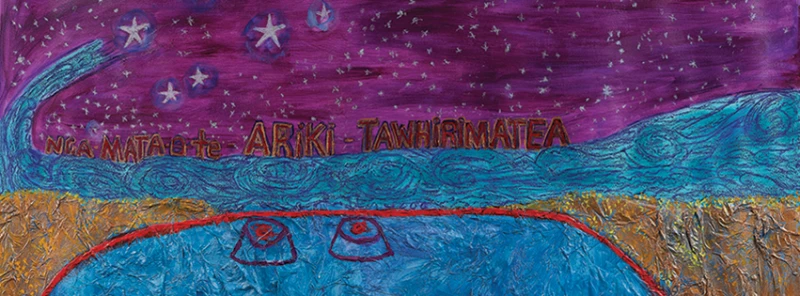
Emily Karaka, Te Ahi Kā o Ngā Tūpuna Maunga, 2022.
‘Matariki Ring of Fire’ will be launched at a special event on 22 June in the University’s Gallagher of Performing Arts. The exhibition centres on the festival of Matariki, and the Tūpuna Maunga of the Tāmaki Makaurau region as well as embraces Karaka’s ties with Waikato and the Kīngitanga.
The series was created following Karaka’s 2021 McCahon House residency, a no doubt nostalgic moment in Karaka’s career as she was mentored by McCahon in the 1970s.
Matariki was first marked as a national holiday in 2022 and represents a moment of reflection and renewal, the stars heralding ceremonies and harvest. Whānau, hapū, and iwi come together to celebrate life and share stories of those who have passed on.
‘Matariki Ring of Fire’ is dedicated to Karaka’s great-nephew, Starr Karaka, who was born and passed away the day before the Matariki dawn ceremony at Pukekawa Auckland Domain in 2019, which she attended. She describes attending the ceremony, presided over by Kīngi Tūheitia, and looking to the dawn sky, farewelling her great-nephew, departing with the other ‘blessed souls’ on Te Waka o Rangi, bound for the heavens.
University of Waikato Collections Curator Cerys Davidson says the University is fortunate to be able to attract an artist of Karaka’s calibre. She says the display builds on last year's exhibition, ‘Voices of Mana Motuhake’ in which an artwork of Karaka’s held in the University art collection also featured. ‘Matariki Ring of Fire’ will run until 20 October, connecting to significant events in the University and national calendar.
“Kōrero shared in the artworks connect not only with Matariki but also Kīngitanga Day and Te Wiki o te Reo Māori and we wanted people to be able to experience the exhibition over these significant events throughout the year,” says Cerys.
Karaka’s canvases heralding the Maunga of Tāmaki Makaurau feature English and te reo Māori names honouring each of them. Three artworks in the collection, Te Paki o Matariki, the Flag of Kīngi Mahuta and the Flag of Dame Te Atairangikaahu also connect directly the Kīngitanga. The crest of Te Paki o Matariki is the coat of arms for the Kīngitanga and also featured on the doors of Turangawaewae Marae.
“We want people to explore Matariki beyond the stars rising, and bring a broad perspective and understanding, because different iwi share different kōreo regarding Matariki, and it is unique within Waikato and the Kīngitanga,” says Cerys.
“Building on ‘Voices of Mana Motuhake’, this exhibition also highlights Te Paki o Matariki, the crest of the Kīngitanga, the messages within that, as well as the expression of mana motuhake prevalent in Karaka’s mahi toi” says Cerys.
The exhibition catalogue also includes an essay by Ngāhuia te Awekōtuku who was the University’s first Māori woman to achieve a PhD, and now an Emeritus Professor. Her essay is in response to first viewing the exhibition at Te Uru Waitākere Contemporary Gallery who are touring the show. Other contributions are made from Te Warena Taua, the Executive Chairman of Te Kawerau Iwi Settlement Trust and Andrew Clifford, previous Kaitohu, Director, Te Uru Waitākere Contemporary Gallery.
